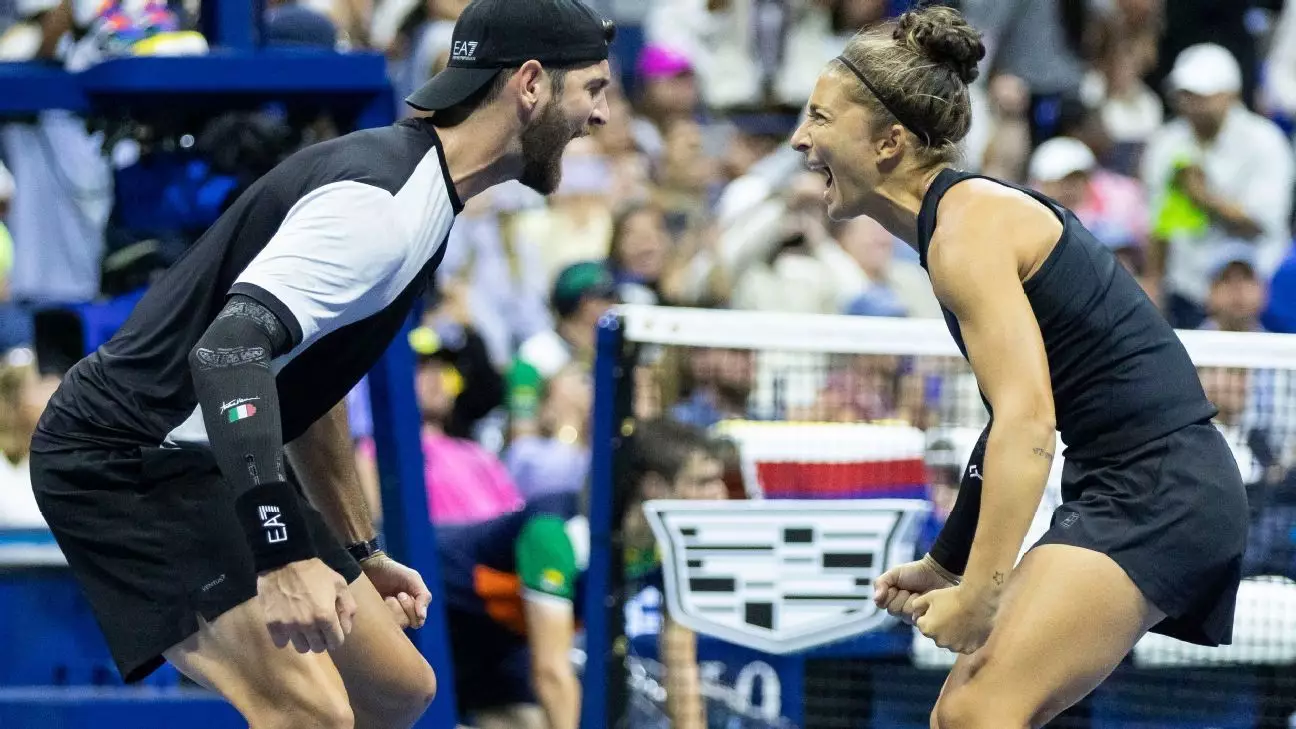The recent transformation of the US Open doubles event was met with skepticism and criticism from many in the tennis community. Organizers, eager to catapult the tournament into modern relevance, overhauled the traditional format, shifting focus toward singles superstars and introducing unconventional rules, such as shortened sets. This dramatic change alienated many doubles specialists, who felt their craft was being sidelined. Yet, amidst this upheaval, Sara Errani and Andrea Vavassori exemplified resilience and demonstrated that perseverance and adaptability can not only survive but thrive in a shifting landscape.
Their journey was anything but straightforward. Facing skepticism about whether they would even secure a spot to defend their title, they navigated the new qualifying system, which prioritized singles rankings over doubles expertise. Despite these hurdles, Errani and Vavassori’s determination carried them through a demanding schedule over two days. Their victory was not just a personal triumph but a statement that true passion and grit can carve a pathway through even the most discouraging circumstances.
Breaking Conventions: The Power of a Dual Championship Win
Winning the US Open mixed doubles title again placed Errani and Vavassori in a historic position—they became the first team to repeat as champions in Flushing Meadows since 2018-19. Their victory was a testament to their skill, teamwork, and strategic adaptability, traits that often get overshadowed amid debates about tournament formats. More importantly, their success challenged the narrative that this revamped event was merely a fleeting spectacle or a supplementary sideshow.
By clinching a $1 million prize, significantly higher than last year, Errani and Vavassori demonstrated the tangible benefits of embracing change, even if it initially seemed threatening. Their achievement resonated deeply with many in the doubles community, serving as a rallying cry that innovation does not necessarily mean marginalization. Instead, it can unlock new opportunities where skills like net play, quick reflexes, and tactical coordination shine even brighter.
Reclaiming the Spirit of Competing
In an era increasingly dominated by singles superstars, the resurgence of doubles at the US Open showcased the sport’s multidimensional appeal. The packed Arthur Ashe Stadium, despite rain delays and the absence of some of tennis’s biggest singles names, reflected a crowd hungry for high-quality, engaging competition. The enthusiastic response to Errani and Vavassori’s efforts pointed to an undeniable truth: fans are craving authenticity, effort, and the compelling display of companionship and strategy that doubles offers.
Critics argue that the new format, characterized by shortened matches and a condensed schedule, compromises the grandeur and depth of the traditional Grand Slam experience. Yet, the energy and excitement of those pivotal moments—like the dramatic match tiebreaker—proved otherwise. The tournament became a proving ground for the idea that bold experimentation can revitalize interest, dispel complacency, and foster a deeper appreciation for every facet of tennis.
The Underdogs as Icons of Innovation
Swiatek and Ruud’s narrow loss in the final—fighting back from an 8-4 deficit in the match tiebreaker—highlighted the unpredictability and high stakes of the new format. Their effort, paired with the triumph of Errani and Vavassori, underscored a broader message: success isn’t solely reserved for the top-seeded giants. It belongs to those willing to challenge norms, to embrace risk, and to push their limits.
Errani’s veteran skill and Vavassori’s athletic agility illustrated that mastery in doubles requires a unique set of tools—anticipation, coordination, and nuanced shot selection—that can excel regardless of format changes. Their victory was not only about personal achievement but about honoring the traditional values of doubles tennis and proving that dedication transcends rules and regulations.
The story of Errani and Vavassori’s triumphant defense at the US Open embodies the essence of innovation fueled by perseverance. In a sport renowned for its dynamic yet tradition-steeped history, they demonstrated that embracing change—when combined with relentless effort—can lead to extraordinary success. Their victory is a compelling reminder that in tennis, as in life, resilience often emerges strongest in the face of adversity and transformation.
Their journey—marked by skepticism, adaptation, and ultimately victory—has the potential to inspire future generations. It challenges fans and players alike to reconsider what constitutes greatness and to recognize that evolution in sport often begins with the unlikely underdogs willing to rewrite the rules on their own terms.

